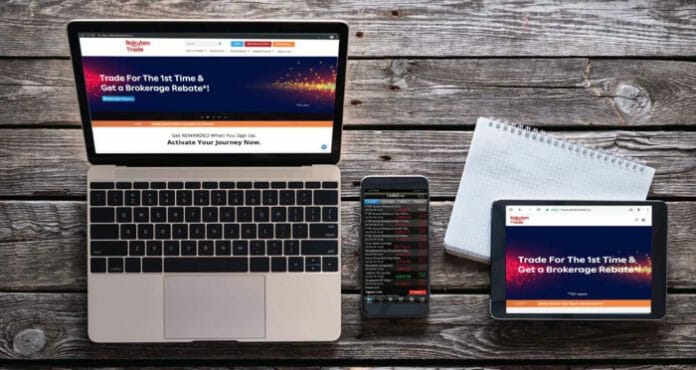Yes, it is.
But, I would say my views on what is risky have evolved progressively over time. I believe as a kid, I felt that investing is risky as I inherited this view from my father, who lost money in stocks during the Asian Financial Crisis in 1997. It was my introduction to the stock market and my association with it was an unpleasant one. To me, investing was tantamount to gambling.
I held onto that view until I was 19 or 20.
At that time, I became interested in finance after reading ‘Rich Dad Poor Dad’. It was an eye-opener for me and subsequently, I read and studied as much as I can on the subject of money, finance, and investing. It has become a habit today. Along the way, I discovered 4 different views on the word ‘Investment Risk’. Personally, I believe that these views would shape how we invest our money. As such, here are the 4 views on the word ‘Investment Risk’:
View #1: Short-Term Volatility
What does it mean?
Well, have you heard of this before? FDs are low-risk and stocks and cryptos are high-risk investments. The rationale for this view is that they measure the levels of ‘Investment Risk’ based on the volatility of asset prices in the short run. So, if you place $100,000 into FDs, you will expect to receive $100,000 plus interest if you choose to uplift them in a short period of time, let’s say under 1 year.
But, you may not do the same with stocks or cryptos. For instance, months ago, you bought Bitcoin when it was US$ 40,000. Today, Bitcoin is priced at around US$ 23,000. The degree of fluctuation in Bitcoin’s value is huge as its price could rise or fall in greater percentages in a short period of time. Hence, it is viewed to be of higher risk as compared to FDs.
Now, here is a question.
Is short-term volatility a good basis to measure investment risk?
Personally, I would say that if I wish to build an emergency or a reserve fund, I’ll say yes. This is because such a fund is meant for rainy days, not to build or grow wealth. In that sense, it is best to compare financial assets that do not fluctuate much in the short run, such as FDs, ASB funds, flexi-loan accounts, and recently, digital cash management platforms such as KDI Save.
However, if my objective is to build wealth over the long run, this measurement does not hold water. How much wealthier would you get by putting money into FDs for a period of 10 years? Will the purchasing power of your money grow in the long term? Hence, my take is that cash or FDs may be low-risk, but they are only so for the short run. In the long run, they will lose their purchasing power.
Hence, I think the view of ‘cash is low-risk, stocks are high-risk’ is true if let’s say your investment purposes and horizon are short-term. I believe it is impractical in using this basis to measure risk if the investments are meant for the long-term.
As such, let’s move onto:
View #2: Pledges of Securities
Let’s take a bank as an example.
Why does a bank charge low-interest rates for its mortgages and higher interest rates for its credit card lending?
I believe this is because a mortgage is pledged by tangible property. For credit card debts, there is no backing of any physical assets. A mortgage is securitised, thus, is seen to be of lower risk. Credit card debts are unsecured debts. So from a bank’s viewpoint, they impose higher interest rates on these debts in order to compensate for higher risks undertaken for these lendings.
In this sense, investment risk is measured based on the recoverability of capital, which could be assessed by the valuation of assets pledged, if any. So, the more valuable the assets pledged, the lesser risk an investment is. On the flip side, an investment will be seen as high risk, if there is no backing of tangible assets to it.
So, what if an investor holds onto this view on ‘Investment Risk’?
Well, if that is you, you would want to know and assess the underlying assets of such investment deals before investing. For instance, if you are looking to invest in a stock, you would study its business model first. You want to ensure that the stock you invest in is a legitimate business that has real assets, real customers, and a genuine ability to earn consistent profits in the long run.
The more legitimate and solid its business model, the lesser its investment risk.
View #3: Credit Assessment
Here is a question.
How does a bank reduce its non-performing loans (NPL) when lending?
The answer is credit assessment. A bank would assess the creditworthiness of a potential borrower before lending. This assessment includes learning about the borrower’s income level and debt repayment behavior via his pay slips, pension statements, tax files, bank statements, credit scores, and so on and so forth. So, a bank is only comfortable in lending after such an assessment is carried out.
Without credit assessment, lending is very risky.
Likewise, it is the same with investing. Take stocks as an example. Many opine it is risky to invest in stocks. Here, I would say this is true if one fails to do any sort of credit assessment on stocks before buying their shares. This is tantamount to lending money to a borrower without checking his financial background. Which banks do that? If a bank does that, it would be out of business very soon.
Thus, I believe it is possible for stocks to be ‘safe’ as investments if investors are diligent in doing credit assessments on stocks before buying them. This involves a study of a stock’s business models, financials, and current initiatives to ensure future sustainable earnings growth via the stock’s annual and quarterly reports.
With it, investors can lower their non-performing investments (NPI) via having a system to do credit assessments on stocks, just as a good bank lowers its NPL in its lending activities through credit assessments.
View #4: Education & Experiences
In a way, investing is likened to driving a car.
Let’s say, I wish to drive from Kuala Lumpur to Singapore. As a driver, I would be expected to know when to accelerate and when to slow down or stop, read the road signs, interpret the colors shown on traffic lights, and so on and so forth. It is about assessing traffic conditions accurately so that I would certainly arrive at my destination as safely and quickly as I possibly could.
Here, there could be some who might be ‘afraid’ to drive to Singapore just after they obtained their driving licenses at the age of 18 or 19. This can be due to an absence of confidence in driving despite knowing how to drive a car. As such, in this instance, they can build their confidence on the road by driving their cars in their neighborhoods. After that, they can choose to drive further once they had built up their confidence. Subsequently, driving from Kuala Lumpur to any part of Peninsula Malaysia, Singapore or Thailand should be a piece of cake.
So, education is about knowing how to drive a car. Meanwhile, real experiences and confidence could be accumulated over time through practice, starting from short drives within our neighborhoods to long-distance driving.
In stocks, an educated investor is one that knows how to pick good stocks, from a pile of bad stocks. This is done through the interpretation of annual reports of these stocks. An uneducated investor is one who is incapable of doing so. So for him, he is like one who does not know how to drive a car. In the stock market, it is common to find people who want to drive but do not know how to drive. The inability to drive has caused many to ‘crash’ with the stock market as they don’t know how they should react to a change in ‘traffic conditions in the markets.
Driving without knowing how to drive is very risky.
Whereas, an experienced investor is one that not only knows how to drive a car but also had accumulated years of experience in successfully driving. For him, driving from Kuala Lumpur to Singapore and back to Kuala Lumpur is a no-brainer and relatively easy. So, in the context of investing, this takes consistent practice. Just as an experienced driver is one that could drive a car safely both day and night, rain or shine, an experienced investor is one that could invest confidently and profitably in both good and bad market conditions.
In short, the more education and positive experiences an investor amassed, the less investment risk.
Conclusion:
So, when one says that investing is risky, what does he mean?
Is he talking about short-term volatility? Or, is it a lack of securities pledged into the investment? Or, is it an inability to do his credit assessment? Or, is he saying that he lacks the education and experiences necessary to invest profitably and confidently in all market conditions?
His context is important. Let’s say if the context is on short-term volatility and if you resonate with this, it is quite likely that you will not invest and hold onto cash, FDs, or products like KDI Save. But personally, my views on risk can be different.
Today, after having discovered the 4 views on investment risks, I continue to believe that investing is risky.
But, I also think that it is possible for this risk to be lowered progressively as the investor grows and matures in his investment capabilities over time. This would involve the investor:
1. Adopts a learning attitude in investing (education)
2. Focuses on building capabilities (education) & gaining experiences.
3. Has a system to do credit assessment effectively, just like a bank.
4. Has a habit of finding out the underlying assets of investment.
5. Does not invest capital that is intended to be his emergency funds.
Thus, instead of avoidance, I chose to build on my capabilities as an investor. If I wish to obtain better and consistent profits at lower risks, I need to learn, grow, and mature as an investor. I cannot inherit my father’s mindset and experiences in the past and expect to be successful in investing in the future. Personally, this involves a mindset shift to adopt principles and capabilities practiced by people who are successful in investing such as Warren Buffett and Charlie Munger.
The more I progress as an investor, the less risky investment is for me personally.
And I wish the same for you too.
By Ian Tai Financial Content Machine. Dividend Investor. Produced 500+ Financial Articles featured in KCLau.com in Malaysia and the Fifth Person, Value Invest Asia, and Small Cap Asia in Singapore. Regular Host and Presenter of a Weekly Financial Webinar with KCLau.com. Co-Founded DividendVault.com, an online membership site that empowers retail investors to build a stock portfolio that pays rising dividends year after year in Malaysia and Singapore.









